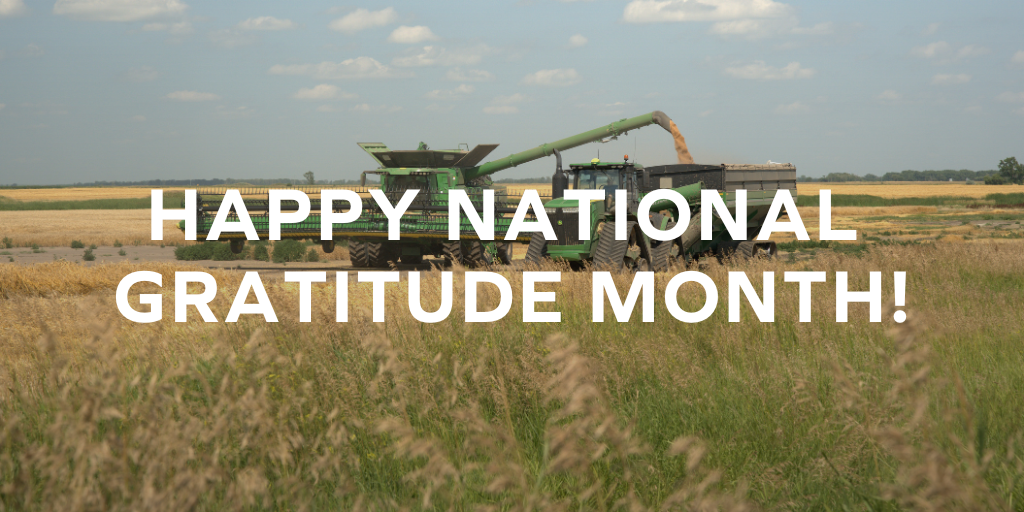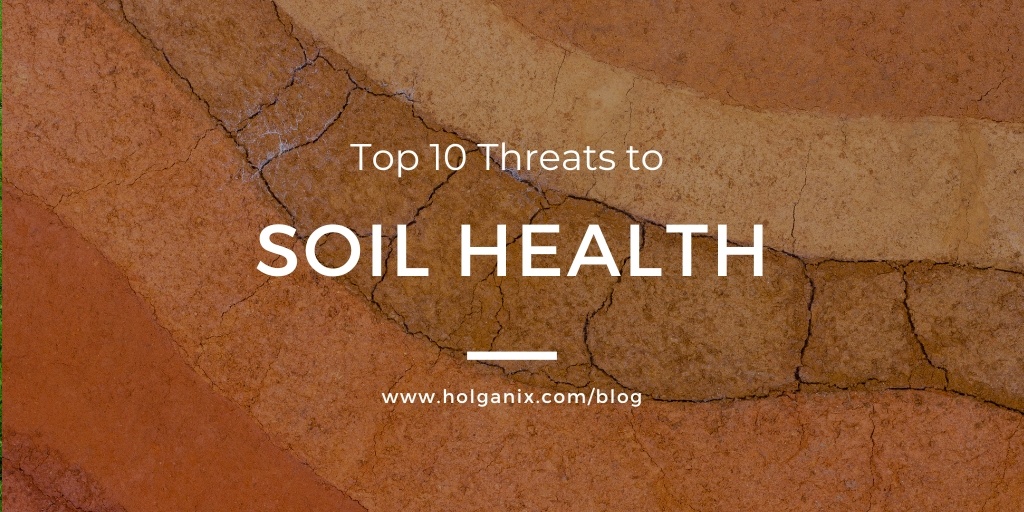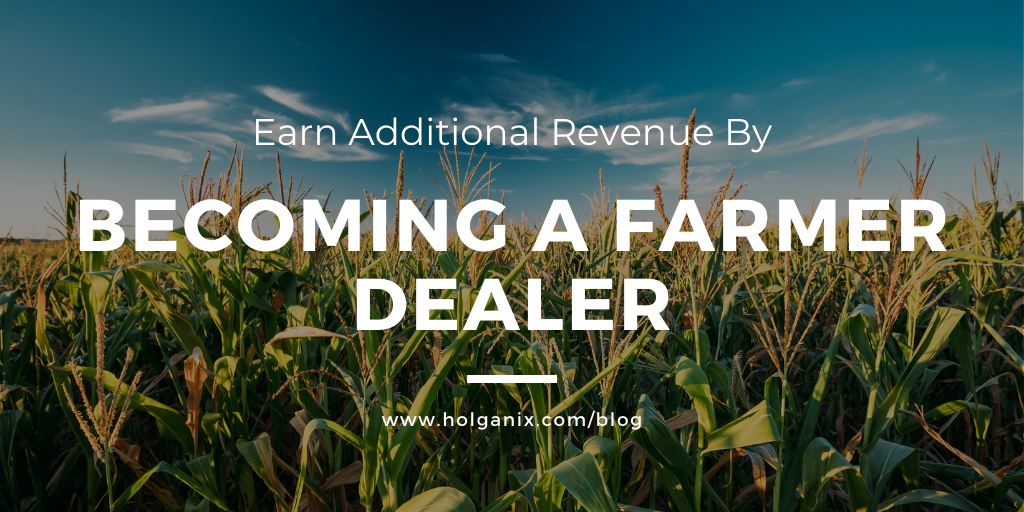
This week’s blog comes from Holganix’s Business Development Manager, Alex Faust. Alex is laser-focused on carbon markets, corporate sustainability, and environmental improvements for agriculture solutions. For the first 10 years of his career, Alex helped build and scale an educational startup where he was the COO. Since then, he has committed himself to working on climate solutions. He is a graduate of Terra.do’s Learning For Action program where he worked on a system’s thinking approach to address agriculture solutions. Alex is now bringing those ideas and passion to the Holganix team and our customers.
The agricultural industry has faced increasing pressure to balance productivity with sustainability. One of the most promising solutions to this challenge is the emerging carbon market. For you as a farmer, that means the ability to start carbon farming. According to the USDA, “Carbon farming is the use of specific on-farm practices designed to take carbon out of the air and store it in soils and plant material. Carbon farming practices include the application of soil amendments like compost or biochar, conservation tillage, agroforestry, cover crops that maximize living roots, and many others.”
Once carbon is stored in the ground and measured, farmers can participate in projects to generate carbon credits that can be sold through carbon markets. This not only contributes to global efforts combating climate change, but also creates a potential new revenue stream for farmers.
While the idea of joining a carbon project sounds appealing, our customers still have a lot of questions: How does carbon farming work? What should I look for in a carbon project? And more importantly, how can I ensure that the project will actually benefit my farm’s bottom line?
In this article, we’ll explore the essential components of carbon projects and the potential benefits to your operation beyond financial incentives.
Understanding the Main Components of a Carbon Project
At the heart of any carbon project there are a few key principles and components ensuring the quality and reliability of the carbon credits produced. When considering a carbon project, it’s important to understand these elements to evaluate whether a specific project is legitimate and a good fit for your farm.
- Carbon Sequestration Activities:
Carbon projects typically involve activities that help improve the concentration of soil organic carbon (SOC). This refers to the carbon stored in soil, primarily from decomposed plant, animal, and microbe material. When practices like reduced tillage, cover cropping, and the use of biological amendments are implemented, they increase the amount of organic matter in the soil, thereby boosting SOC levels. As SOC increases, more carbon is effectively "locked" in the soil, reducing the amount of CO₂ in the atmosphere and reducing the future impacts of climate change.
However, if you are not already using these farming practices, the shift can be challenging. There is always a risk associated with making changes on your farm. Whether it be the investment of time, resources, and learning new techniques, or the time horizon needed to see significant economic and soil health benefits, you want to be confident that whatever you choose is going to deliver results.
- Additionally and Permanence:
One of the most critical aspects of a high-quality carbon project is ensuring "additionality." This means that the carbon being sequestered would not have been captured without the incentive provided by the carbon project. In other words, the project must demonstrate that its activities are truly creating a new benefit for the environment, rather than simply taking credit for carbon that would have been stored anyway. For you, this means that to qualify for a carbon project there will need to be additional changes made to the way you have historically operated your farm.
Permanence is another vital factor. Once carbon is sequestered in the soil, the goal is to ensure that it stays there for the long term, ideally for decades or even centuries. Practices such as reduced tillage and increasing fungal activity in the soil help ensure that soil organic carbon is not disrupted and is locked deep in the soil, reducing the risk of it being released back into the atmosphere. For you, this means commitment and longevity are key. With a carbon project, you are making an investment in the future of your farm. One that can have significant financial, health, and social rewards. Most projects will require a commitment of at least 10 years of practice changes to ensure the carbon is not released back into the atmosphere.
- Independent Verification and Transparency:
To ensure the carbon credits issued by a project are credible, reputable carbon projects will require third-party verification. This means that an independent organization will verify the results of the project, ensuring that the carbon being sequestered is real and measurable.
Many project developers look to be approved for additional certifications and ratings to build trust and validation with buyers. In a fragmented, voluntary market, buyers are looking for these certifications and ratings to verify the price, quality, and validity of impact.
Additionally, transparency is key. Farmers should be a partner in the carbon project. Any impacts from these projects must not come at the expense of others in their community or elsewhere. High quality carbon projects collaborate and provide mutual benefit to their farm partners, ensuring that the projects support the broader community and environmental goals. Farmers should also be able to easily access information about how their carbon credits are being measured, tracked, and sold.
It is recommended that you look to see what standards, programs, and data systems your potential project developer is using.
How Carbon Projects Can Benefit Your Business Beyond Revenue
The idea of earning additional income through the sale of carbon credits is certainly appealing. However, the benefits of joining a carbon project should extend far beyond the financial gain of selling credits. By participating in a project, you should choose a methodology and practice that not only sequesters carbon but also improves the long-term productivity and resilience of your farm. Here are a few benefits farmers should look for when choosing a project to join.
- Improving Soil Health:
The foundation of any productive farm lies in the health of its soil. Practices like reduced tillage and reduced fertilizer, cover cropping, and the use of biological amendments have a great impact on soil structure and fertility. When choosing a carbon project, take into consideration how the practices you are committing to will improve your land (remember this is intended to be a long-term commitment ~10 years).
Depending on the practice you choose, improvements in soil and crop health should lead to enhanced microbial activity in the soil, promoting the development of stronger root systems, and better soil structure. This can result in improved water-holding capacity, protection of soil from erosion, and increased nutrient uptake. Farmers with healthier soil should experience faster plant emergence, higher yields per acre, and natural pest and disease resistance, ensuring their farm is better equipped to thrive even in challenging conditions.
- Reducing Input & Tillage Costs:
As farmers improve their land through better soil health, the need for additional nutrient inputs (NPK+), pesticides, and herbicides naturally declines. Healthy soils with a rich diversity of microbial life (enhanced by practices from the carbon project farmers choose) create an ecosystem where biology takes over the key functions of making nutrients readily available and fighting off unwanted pests and diseases. As the biology in the soil thrives, nature itself provides the benefits that were once dependent on synthetic inputs, thus saving the farmer money.
In addition, it is recommended that you find a project that harnesses nature’s own processes to replace or reduce the need for soil destructive practices like tillage. Practices like these can lead to erosion, nutrient and water loss, compaction by destroying soil macroaggregates, and will release the stored CO2 back into the atmosphere, reducing the effectiveness of your efforts. A well-designed project will encourage the natural breakdown of crop residues, which in turn makes nutrients available to the soil.
- Enhancing Your Farm’s Sustainability Credentials:
Consumers and markets are increasingly prioritizing sustainability. By participating in a carbon project, you can position your farm as a leader in sustainable agriculture and environmental stewardship. This can help you access premium markets, where buyers are willing to pay more for products that are grown in environmentally friendly ways. Additionally, carbon farming can align your operation with emerging sustainability standards, potentially opening up new revenue streams in the future as more buyers seek environmentally-positive products.
How can your farm be more profitable by thinking about carbon?
At Holganix, we are first and foremost a farmer’s partner, committed to transforming agriculture for the better. Our team of farmers, agronomists, and scientists operate on the belief that nature knows best. We are focused on enhancing the natural processes that take place beneath the surface of your fields. Our flagship product, Bio 800+, is a microbial that introduces beneficial microorganisms, like bacteria, fungi, and protozoa, into the soil. These tiny but powerful life forms work together to create a healthier, more productive soil ecosystem.
By aligning with Holganix, farmers are not just improving their farm’s short term yield—they are building a legacy of sustainability. We continue to invest in research and development to ensure that our products deliver the highest quality results, whether that’s in terms of crop yields, soil health, or carbon sequestration.
In select markets, Holganix has released a carbon offering for current agricultural customers. Although the 2024-2025 program is sold out, you can reach out now to learn more about getting on the wait list for the 2025-2026 Soil Stewardship Program.
.jpg) |
October 24, 2024
|
1:00 PM
|
October 24, 2024
|
1:00 PM




-1.jpg)
-1.jpg)
-1.jpg)
.jpg)

.jpg)
.webp)
-1%20(1).webp)
-831535-2.webp)



.jpg)



